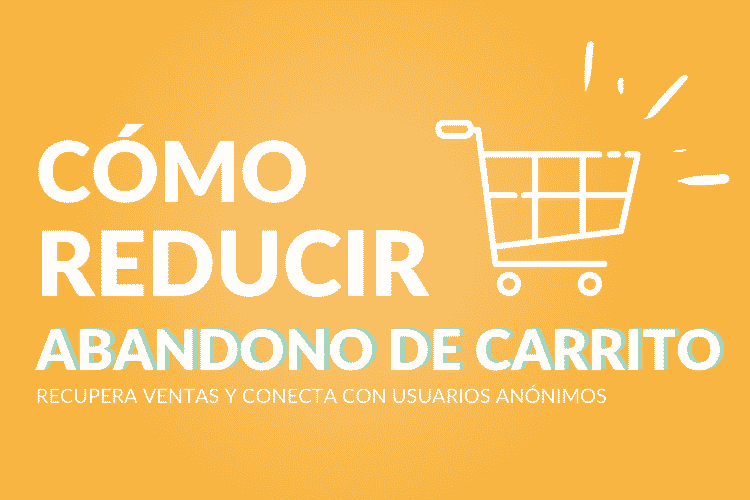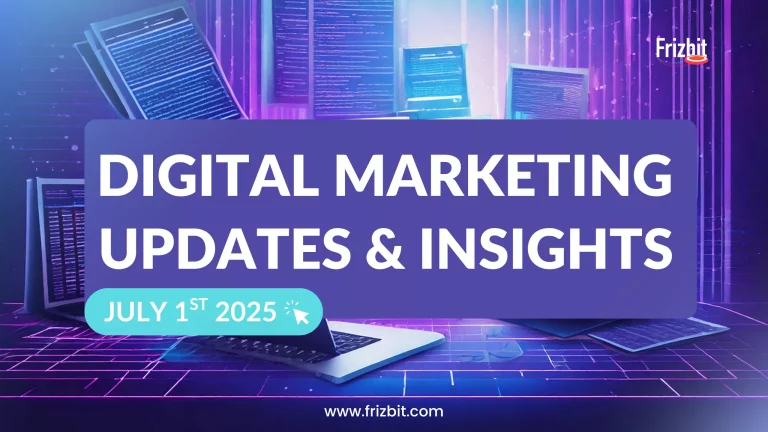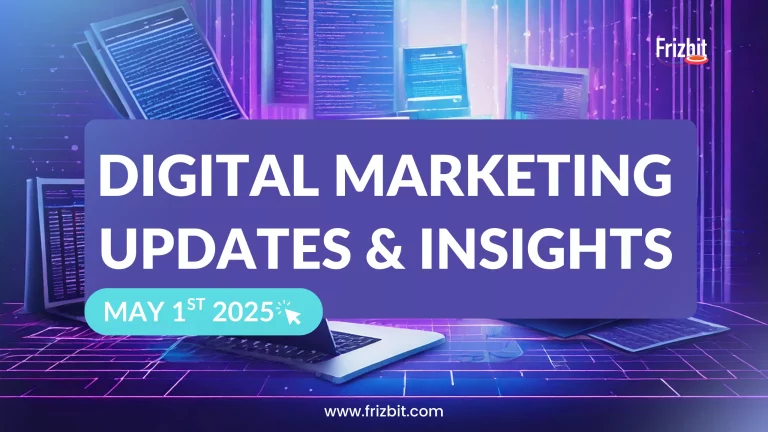Cart abandonment recovery is the biggest issue e-commerce sites face every day. According to Statista on a study including different industries, for March 2020 an average of 88.05% of online orders were left behind without completion. Specifically, the online retail sector has an average of 84.51 percent shopping cart abandonment rate.
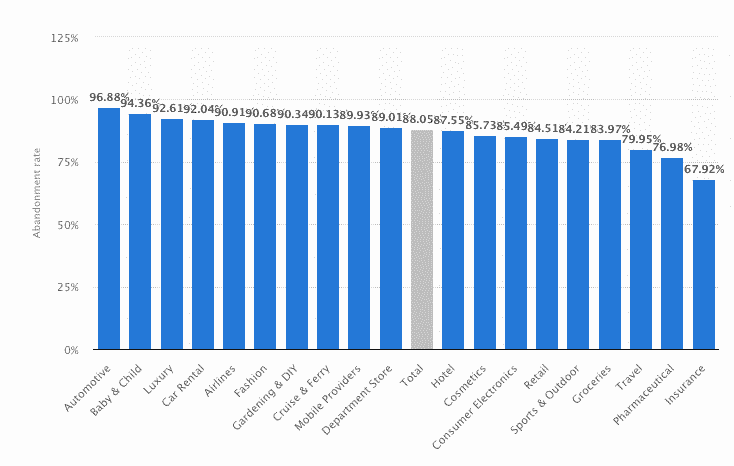
Since it represents a huge leak of sales, it’s one of the most (if not the most) important problems to tackle if you own or run any type of online store. There are many reasons why customers abandon their shopping carts. Before we go into detail on how to mitigate this issue, let’s point out some of the:
Main reasons shoppers abandon carts:
- Confusing site
- Unexpected costs in shipping or taxes
- Confusing checkout process
- Online “window shopping”
- Security concerns
- Found a better deal on another site
If you want to implement cart abandonment recovery strategies, there are many techniques you can apply as for today and start getting results. Even though all users are different, with their own likes, dislikes and needs, there are some similarities and commonplaces to be identified within the segments and come up with a strategic approach that offers the right solutions.
Cart Abandonment Recovery Strategies
1. Use retargeting channels strategies
Marketers are very lucky. Yes, cart abandonment is a big issue for online stores, but there’s a wide variety of channels and marketing tools to use and tackle the problem from all angles with a tailor made strategy that fits your needs and fulfill customer’s expectations. One of the most important moves to make is to implement retargeting strategies.




The following table shows an estimate of how each channel performs for cart abandonment recovery strategies. The numbers where measured for a average e-commerce site.
- Opt-in rate: The op-in rate shows how many visitors subscribe to each channel.
- % of subscribers in sequence: the % of subscribers in sequence makes reference to how many of those subscribers can be reached by the respective channel.
- Number of messages in sequence: when it comes to the number of messages in the sequence, it shows how many messages where designed to include as a series.
- CTR: is the click-trough rate for each channel, it show how many subscribers who received the messages clicked on it.
- Conversion rate: how many subscribers who received the messages and clicked on it, finished a purchase.
- Increase in sales: how much revenue said channel generated for the site.
| Channel | Opt-in Rate | % Of Subscribers in Sequence | # Of Messages in Sequence | CTR | Conversion Rate | Increase in Sales |
| Email – Cart Abandonment | 1- 3% | 100% | 3 | 17,2% | 3,8x | 4% |
| SMS – Cart Abandonment | 0,5-1,5% | 100% | 1 | 35,4% | 5,2x | 2% |
| Web Push – Cart Abandonment | 5-10% | 10-15% | 3 | 12,1% | 2,3x | 1% |
| Web Push – Full Funnel | 5-10% | 100% | 3 | 10,7% | 0,8x | 2% |
Users that have reached the checkout stage of the shopping funnel are easier to convert than visitors or potential customers. There’s no reason not to make the biggest effort on this step.
You have three main channels available for cart abandonment recovery and recover lost sales while retaining users: automated web push notifications, emails and SMS.
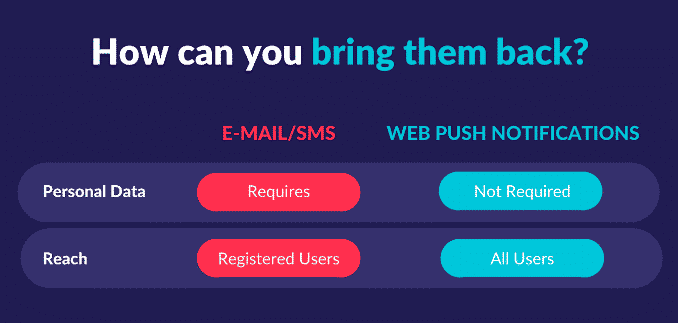
-
Cart abandonment recovery automated Web Push Notifications
Web push notifications are messages sent through browsers to, either mobile or desktop, to subscribers that opt-in to receive them. They’re delivered the moment users open the browser and start navigating online, indistinctly of the site or page they’re on at the moment.
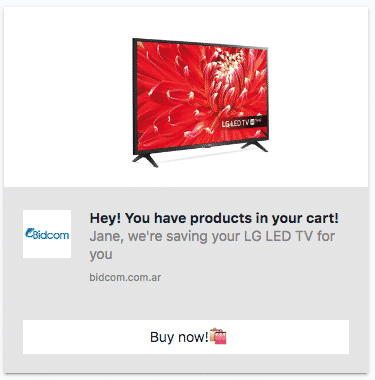
Automated web push notifications allow to send users automatic messages related to the step of the shopping journey they were on the moment they left the site. For example, when users put an item in the basket, but abandon the web without completing the order, they will receive an automated web push notification reminding them about the product they left behind.
You can recover lost sales from abandoned carts by sending automated notifications to users who left products in their basket but didn’t complete the purchase. You can schedule a sequence of messages to be delivered after certain amounts of time, like 1 hour, 1 day and 3 days after the user abandoned its shopping cart.
The most engaging feature about using this channel to recapture lost customers, is that you don’t need any type of personal data from them. Unlike email or SMS, you can retarget visitors and anonymous users with web push notifications and bring them back to your site so they can finish their purchase.
-
Cart abandonment recovery emails
Cart abandonment email might be the strategy online stores use the most to tackle this issue. When using automated emails, they’re automatically sent to users that left the site on some step of the checkout process without completing a purchase after they added products to their cart.
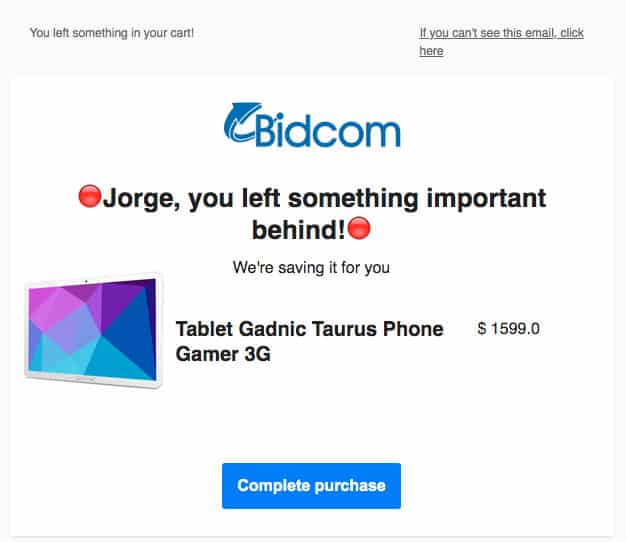
Frizbit allows you to set up automated behavioural emails to recover abandoned carts. The configuration process only needs to be done once, so implementing this strategy won’t represent a continuous effort or add to your normal workload.
Recovering abandoned carts emails should be as highly customised as possible. When users identify and relate to the content of the message, click-through and conversion rates increase significantly which translates to a recovery of lost sales and an increase in your revenue.
This strategy has always been so popular, because it has presented a direct communication with users by contacting them through their email accounts. The downside is that, in order to do so, you need people to share with you their personal information and they don’t always do that. So, basically, if a user leaves the site before reaching the part of the checkout process where they’re supposed to submit their email address, you lose that user for good.
Even though cart abandonment emails have always presented encouraging results for online stores, combining them in a strategy that also includes automated web push notifications will help you optimize your strategy and take it to the next level. Keep in mind that with emails, you can only reach those people that registered, while losing visitors and anonymous users. Adding an additional channel, that allows you to communicate with all visitors might be what your strategy is missing.
You can check out our Success Story with Bidcom, an online retailer in consumer electronics that uses a combination of Frizbit’s automated behavioural emails and web push notifications campaign to recover abandoned carts.
-
Cart abandonment recovery SMS
SMS cart abandonment are messages sent to users that left a site during some step of the checkout process after adding a product to their basket. They work with the same principle of cart abandonment emails, but instead of receiving the message in the inboxes, users receive them on their mobile devices.
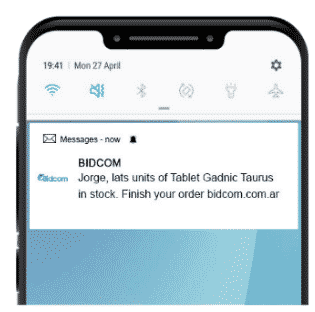
The format of SMS presents a great opportunity for online stores, since the information is delivered directly to the hands of the user through their phones, which makes it a very direct form of communication. Everyone has their mobiles nearby and constantly checks them during the day. Unlike emails, with SMS you don’t have to wait for users to go and check their inboxes to get the message.
They are also highly customisable as well, and can include user name, product name, category name, brand or pretty much anything you wish to highlight about the article. This helps by making the message more relevant and harder to ignore by the user.
However, the way it happens with emails, you need users to provide information: their phone number. If people are already reluctant to share their email address, this unwillingness increases a lot when it comes to sharing much more personal information like their personal number. If they don’t, you’ll lose them as well.
Create a multichannel cart abandonment recovery strategy
There are multiple roads you can take to deal with cart abandonment: optimizing the web experience, using retargeting emails, sms or web push notifications. The way we see it, the real solution for this issue is to combine all of them in a well-planned retargeting strategy.
FYI, we’re not saying that you should harass your users with messages while you follow and stalk them through every possible channel. What we’re saying is that you need design and execute a multichannel cart abandonment strategy in a way each channel complements the other.
Create a strategy thought out like a service you’re providing your customers. You want to bring them back to finish their purchases and recover lost carts in a way they feel they’re also gaining something. You can use each channel available in a different way, with different types of messages, different frequencies and segmenting by users by creating a flow of messages.
Remember to always make the message as relevant as possible by using the dynamic fields available such as user name, product name, image, price or any information you see fit. The most important thing you need to keep in mind when designing your multichannel cart abandonment strategy is to use the frequency cap parameter so you can regulate the time periods your messages are delivered.
This is especially important if you work with different providers for each channel. You’ll have to coordinate the time frames in which you want each message to be delivered so they don’t clash with each other. For example, if the recovery cart email is sent after one hour, you’ll have to change the web push notification timing to be sent after two hours. If the user clicks on the email and completes a purchase, that event will be fulfilled, hence cancelling the web push notification automatically.
If you work with the same provider for web push, emails and SMS, this won’t present a problem or extra work. Frizbit allows cross-platform event triggering coordination, meaning that if a user clicks on the cart abandonment recovery notification, the email and the SMS won’t be sent and so on.
Additional Tips to Reduce Cart Abandonment Rates
1. Optimize your site
When we talk about cart abandonment issues, we’re referring to the last step of the shopping funnel. So why are we even mentioning the quality of the site as an important element here? Simple: user experience from top to bottom.
- Simplify navigation
Simplify the journey as much as you can. A lot of users abandon carts because of a confusing, complex navigation. The more clicks you put them through, the higher the chances that they leave before completing a purchase. The ideal number here is up to three clicks. To get there, make sure you organize your products in different, identifiable categories with names that clearly describe what’s in them.
- Create engaging informative product pages
Remember that before any user even thinks about adding a product to the basket, they browse through your site. They get a feeling from what they see, from the homepage to the product page. You want to focus on creating an engaging experience for them that also presents all the information they might need to know before making a decision.
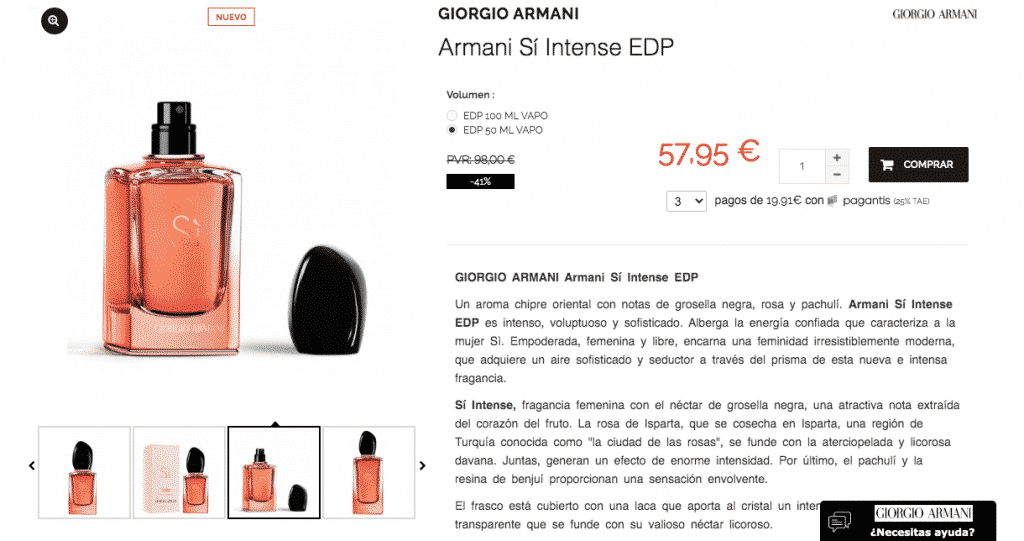
Include product visuals that portray as best as possible the characteristics of the article: photos from different angles, videos, details. When shopping online, customers don’t get to touch, smell or experience the product in any physical way, and that can be a huge barrier to the shopping process. Reduce it by adding as much visual and descriptive information as you can.
- Reduce loading times
Long loading times can greatly affect cart abandonment rates. Keep in mind that people get easily bored and distracted when browsing online. If you make them wait too long to go through checkout after finally deciding to shop for a product on your site, you can very easily lose them.
This risk is even bigger for mobile users who already present higher cart abandonment rates as they are. Bottom line, if your site is slow, users will abandon. The checkout page is the step where you want to boost your site’s loading time as much as possible. Making the shopping journey easy and fast in this stage is crucial for customers to complete their purchase and avoid cart abandonment.
2. Increase site trust
As we mentioned before, one of the main reasons for cart abandonment is a lack of trust in the shopping process. Even though by now most of us are extremely used to shopping online and we do it all the time, there are still a lot of barriers regarding the level of trust on online transactions.
You’re asking people that don’t know you from anything to trust you, not just with personal information, like email or phone number, but with very private and sensitive credit card and bank account details. It’s your job to increase the level of trust. You can do it by:
- Displaying logos of security companies your work with: One study done by Actual Insights found that, on average, 61% of people did not buy because a trust logo was no were to be found on the site, and over 75% said they didn’t buy because they didn’t recognize the logos used.

- Including social proof: If you also let users know that others have purchased products from you and had a great experience doing so, you might tilt the balance in your favor. It’s all about adding valuable information that reduces hesitation by increasing trust leves of your site.

- Avoiding to request unnecessary information: nobody likes to share their personal details on the internet. Especially if you don’t know what they’re going to be used for, so refrain yourself from asking people to fill endless forms with personal data. If possible, create a “guest checkout” option that doesn’t require users to create a profile on your site.
3. Be honest about your prices!
Unexpected and hidden additional charges in the checkout page is the biggest reason customers leave without completing a purchase. 56% of shoppers claimed to have abandoned their cart because extra rates were not mentioned before.
To lower this stat, be as transparent as possible from the get go. Make sure to display shipping rates and tax charges as clearly as you can so people can see it and don’t be surprised when they’re about to click that final “complete purchase” button.
You can add a shipping calculator where customers can introduce their addresses and learn how much it will cost them. Another option is to offer free shipping when a certain basket price is met. This way, not only will the costs be clear, it will be an extra incentive for customers to maybe spend a little more on your site.
You can reduce cart abandonment rates dramatically if you plan and execute a seamless retargeting strategy. If you want to request a one month demo period to try it out on your site, let us know by clicking here, we’ll be happy to help.
These articles might also interest you!
